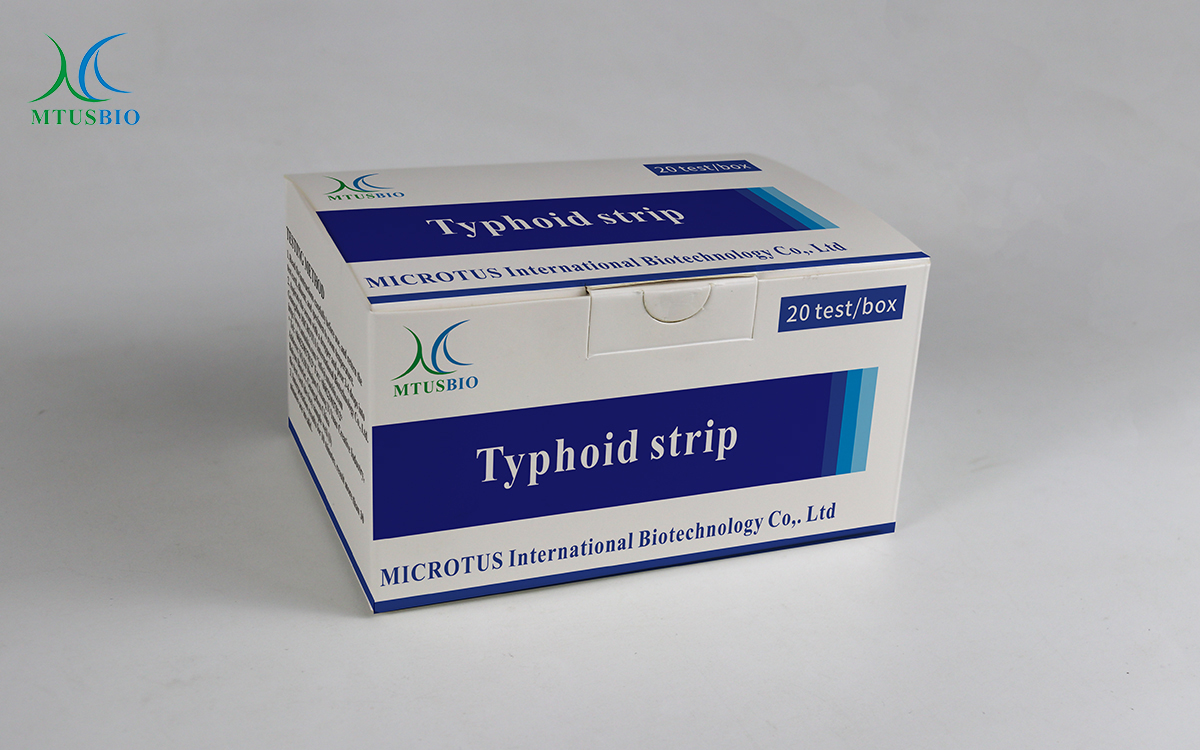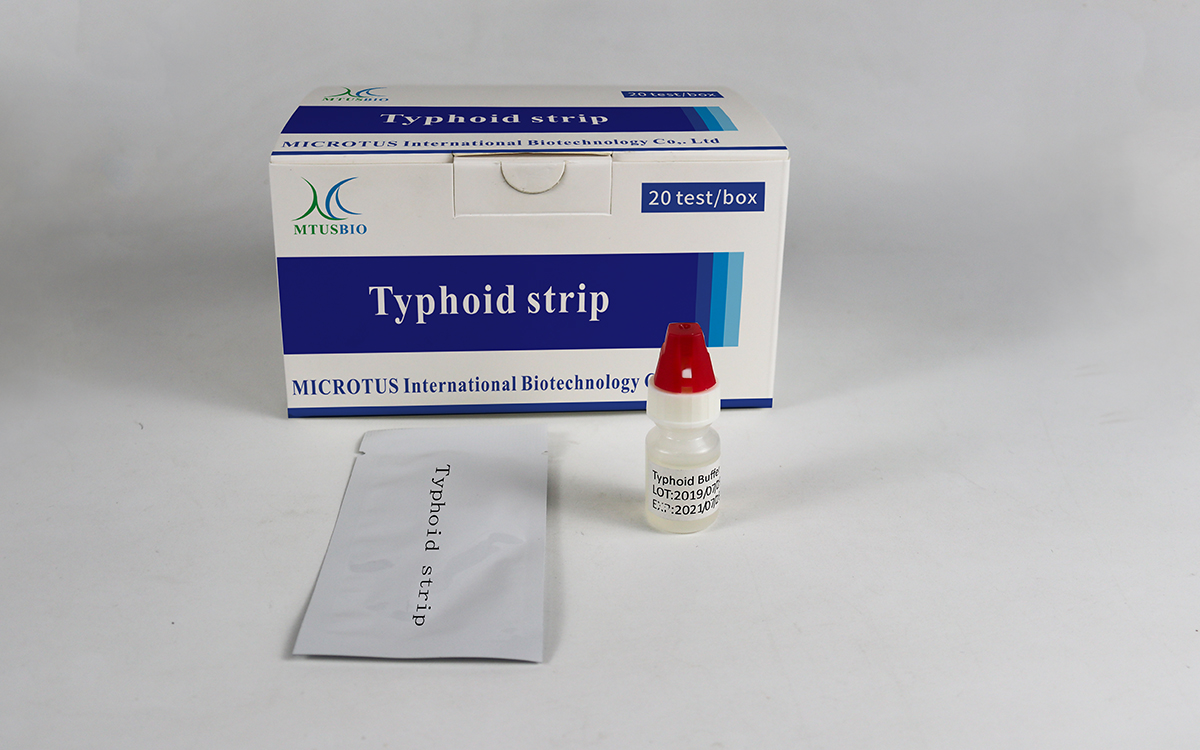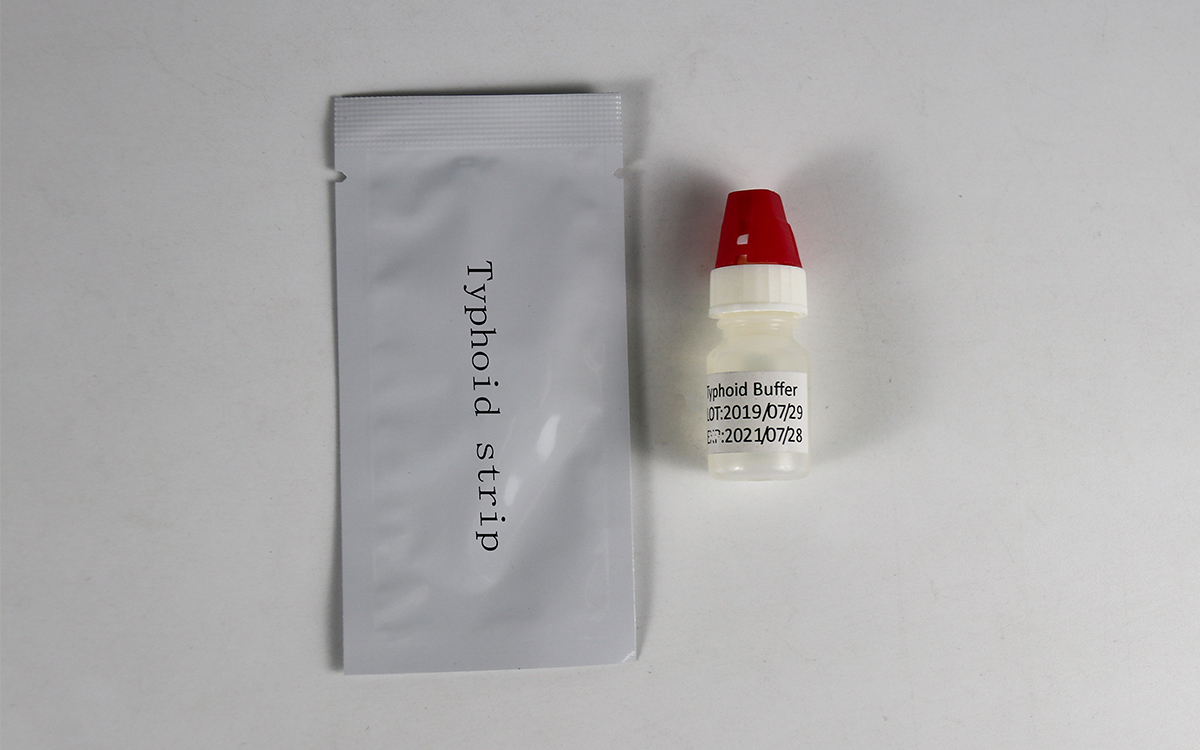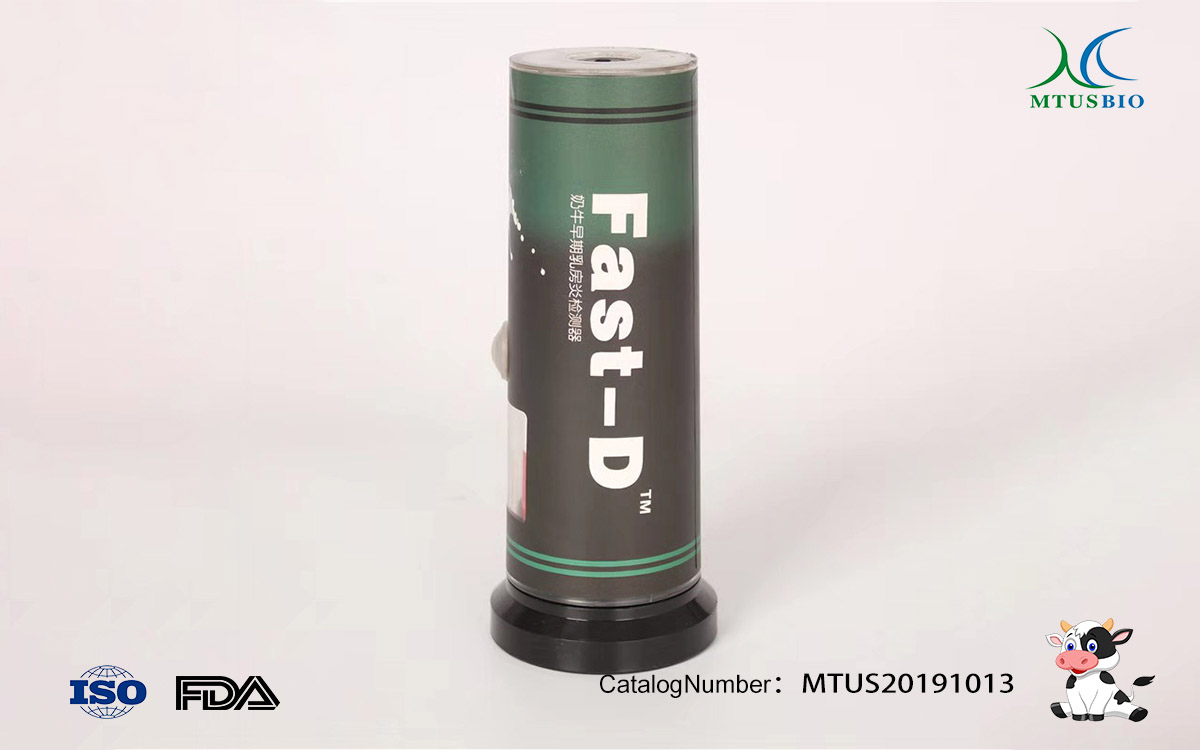Summary
Typhoid fever is a bacterial disease, caused by Salmonella typhi. It is transmitted
through the ingestion of food or drink contaminated by the faeces or urine of
infected people. Symptoms usually develop 1–3 weeks after exposure, and may be
mild or severe. They include high fever, malaise, headache, constipation or
diarrhoea, rose-coloured spots on the chest, and enlarged spleen and liver. Healthy
carrier state may follow acute illness. One step Typhoid IgG/IgM Test is a simple,
visual qualitative test that detects Typhoid antibodies in human Whole
Blood/serum/plasma. The test is based on immunochromatography and can give a
result within 15 minutes.
Principle
The Typhoid IgG/IgM Test is a qualitative membrane strip based immunoassay for
the detection of Typhoid antibodies (IgG and IgM) in Whole Blood /Serum / Plasma.
The test device consists of: 1) a burgundy colored conjugate pad containing Typhoid
recombinant envelope antigens conjugated with Colloid gold (Typhoid conjugates)
and rabbit IgG-gold conjugates,2) a nitrocellulose membrane strip containing two
test bands (T1 and T2 bands) and a control band (C band). The T1 band is pre-coated
with the antibody for the detection of IgG anti-Typhoid, T2 band is coated with
antibody for the detection of IgM anti-Typhoid, and the C band is pre-coated with
goat anti rabbit IgG. When an adequate volume of test specimen is dispensed into
the sample well of the test cassette, the specimen migrates by capillary action across
the cassette. IgM anti-Typhoid, if present in the specimen, will bind to the Typhoid
conjugates. The immunocomplex is then captured by the reagent pre-coated on the
T2 band, forming a burgundy colored T2 band, indicating a Typhoid IgM positive
test result and suggesting a fresh infection. IgG anti-Typhoid if present in the
specimen will bind to the Typhoid conjugates. The immunocomplex is then captured
by the reagent coated on the T1 band, forming a burgundy colored T1 band,
indicating a Typhoid IgG positive test result and suggesting a recent or repeat
infection. Absence of any T bands (T1 and T2) suggests a negative result. The test
contains an internal control (C band) which should exhibit a burgundy colored band
of the immunocomplex of goat anti rabbit IgG/rabbit IgG-gold conjugate regardless
of the color development on any of the T bands. Otherwise, the test result is invalid
and the specimen must be retested with anotherdevice.
Quality Control
A procedural control is included in the test. A red line appearing in the control
region (C) is considered an internal procedural control. It confirms sufficient
specimen volume, adequate membrane wicking and correct procedural technique.
Control standards are not supplied with this kit. However, it is recommended that
positive and negative controls be tested as good laboratory practice to confirm the
test procedure and to verify proper test performance.
Limitations
The Typhoid IgG/IgM Rapid Test is limited to provide a qualitative detection.
The intensity of the test line does not necessarily correlate to the concentration of
the antibody in the blood.
The results obtained from this test are intended to be an aid in diagnosis only.
Each physician must interpret the results in conjunction with the patient’s history,
physical findings, and other diagnosticprocedures.
A negative test result indicates that antibodies to Salmonella typhi are either not
present or at levels undetectable by thetest.





















